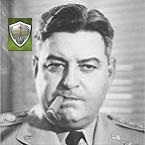ColinWright
Posts: 2604
Joined: 10/13/2005
Status: offline

|
quote:
ORIGINAL: Panama
quote:
ORIGINAL: Meyer1
I have not read the wishlist (but I'm gonna), so I don't know if this is covered.
One of the features of TOAW, the combat rounds, works well as long as the units that are attacking are concerned. I mean, an example: unit A has not moved, unit B has moved and have left 50% of movement points, and both are attacking unit C. The combat will start in a "middle" round, refelcting the fact that unit A have to wait to unit B to get there.
All very nice here.
The problem starts when we are talking about non-attacking units. Other example: unit A has not moved, and is attacking enemy unit G, which is sourronded by friendly units B, C, D, E anf F, so there's no escape. All of these friendly units ( B, C, D, E and F) have moved before. So, the combat starts in round one, and if succesfull, the result would be the destruction of unit G, who can not escape, because his retreat route is blocked by units that should be not there at that moment
Very unrealistic result.
Fix to this problem is very simple (that doesn't mean that would be easy to implement in TOAW code  ): the round in which the combat starts, should not be based in the percentage of movement points of the units that are attacking, but instead, in the friendly unit that have less percentage of movement points available, and is adjacent to the unit that is attacked. ): the round in which the combat starts, should not be based in the percentage of movement points of the units that are attacking, but instead, in the friendly unit that have less percentage of movement points available, and is adjacent to the unit that is attacked.
I'm thinking that an exception could be made to the units that are in the same hex of the ones attacking, as long as these units don't affect the retreat behaviour of the attacked unit (I don't know if that is the case now)
I don't know how popular this may be (considering how it would change the way of play the game, probably not much), but it would result in a more realistic simulation
Easiest solution in a case such as this IMO. Have the combat consume as much time as it took the 'last' unit to arrive. The unit that consumed the most time to close the pocket is the one time consumed is based on. Even more, if that unit consumed it's entire turn to get there then the combat can't take place until next turn.
The problem is that while on the attack dialogue, you can add or omit units as you please, if units can affect how much time the combat will take regardless of whether you choose to select them for an attack, setting up that attack becomes much trickier. You'd have to avoid moving in late arrivals rather than just piling everyone in and then deciding who takes part in the attack when it comes time to set up your battles. One really would need some kind of 'take back' feature -- or one where the late-arriving unit would just get booted out of the way if defender wanted to retreat.
Else playing TOAW well will become much, much more challenging.quote:
Any turn based game will have problems. Such as high movement point units moving through the opponents lines thus cutting them off without the opposing units reacting to the movement. In real life the opposing side could react and prevent such manuevers at least in part. Since no reaction is possible during the other side's turn lots of pockets are formed that wouldn't be possible in a real time environment.
This is at least partly a design flaw. If you set your scale/turn length ratio appropriately, it won't happen as much. You want week-long turns at 2.5 km per hex? There'll be a price tag.quote:
But then again, you enable the non moving side to react to movement the same way they react to attacks with some kind of reactionary setting.
I'm beginning to believe Ralph's wego option might be a good idea if it doesn't add appreciably to how long email games take.
Ralph has a 'we-go' option? Well, good stuff. However, efforts in this direction have failed before. Caveat Programmator...
_____________________________
I am not Charlie Hebdo
|
 Printable Version
Printable Version





 ): the round in which the combat starts, should not be based in the percentage of movement points of the units that are attacking, but instead, in the friendly unit that have less percentage of movement points available, and is adjacent to the unit that is attacked.
): the round in which the combat starts, should not be based in the percentage of movement points of the units that are attacking, but instead, in the friendly unit that have less percentage of movement points available, and is adjacent to the unit that is attacked. 




 New Messages
New Messages No New Messages
No New Messages Hot Topic w/ New Messages
Hot Topic w/ New Messages Hot Topic w/o New Messages
Hot Topic w/o New Messages Locked w/ New Messages
Locked w/ New Messages Locked w/o New Messages
Locked w/o New Messages Post New Thread
Post New Thread